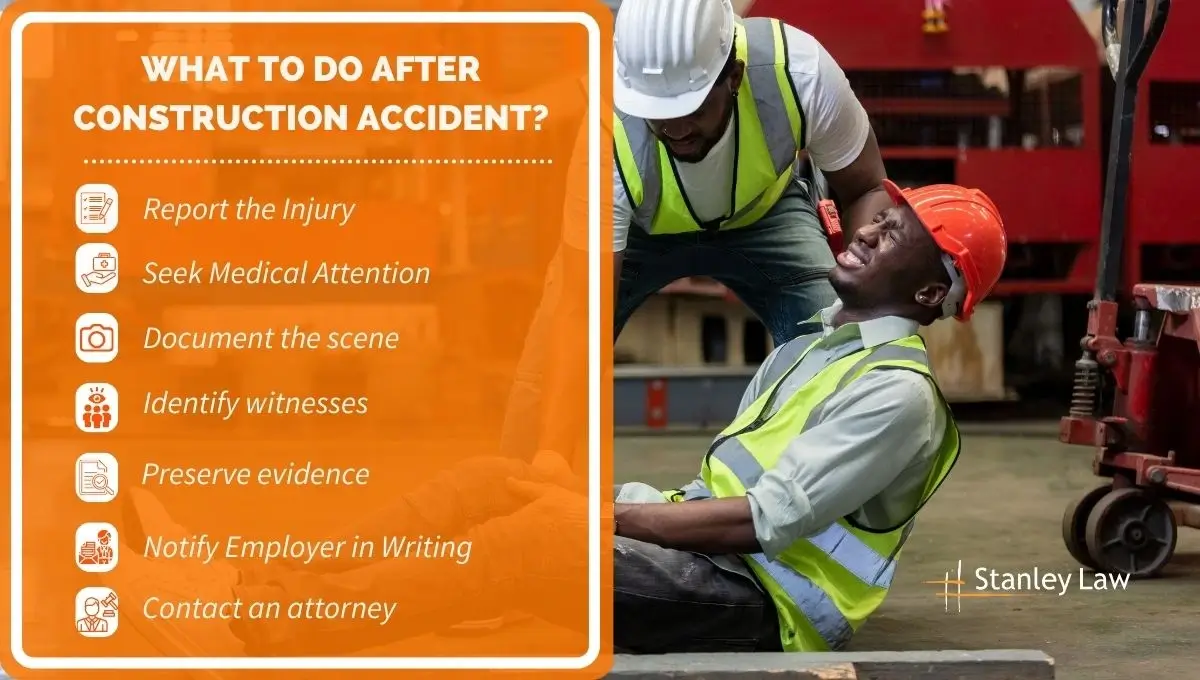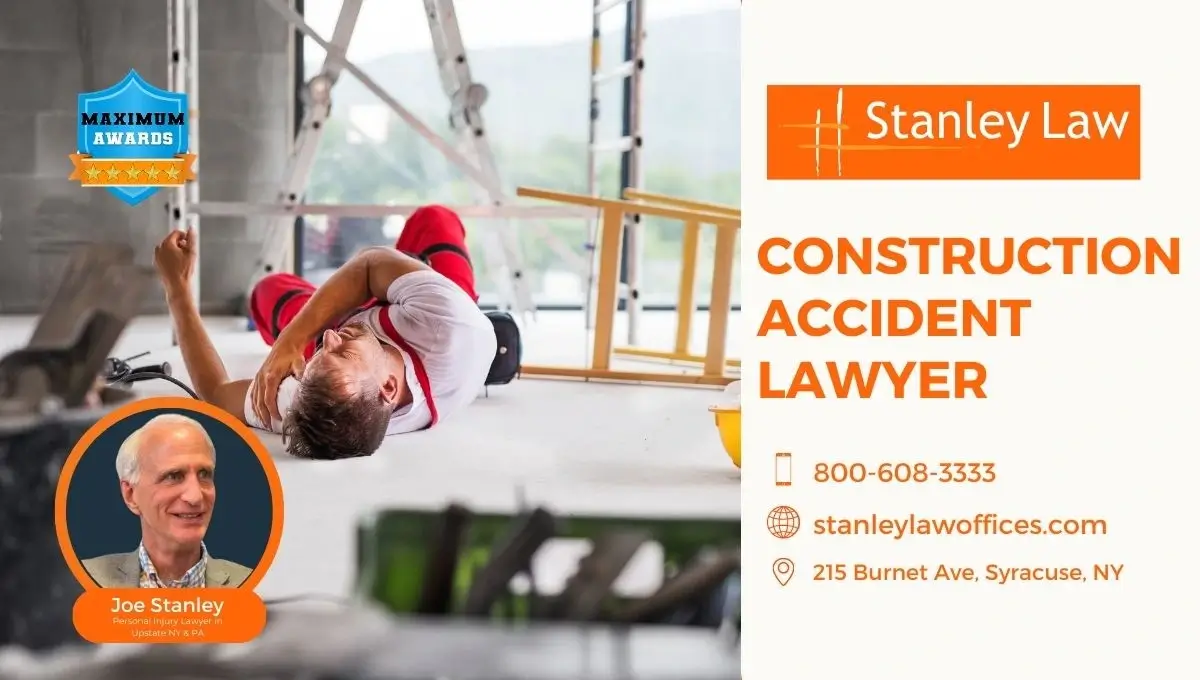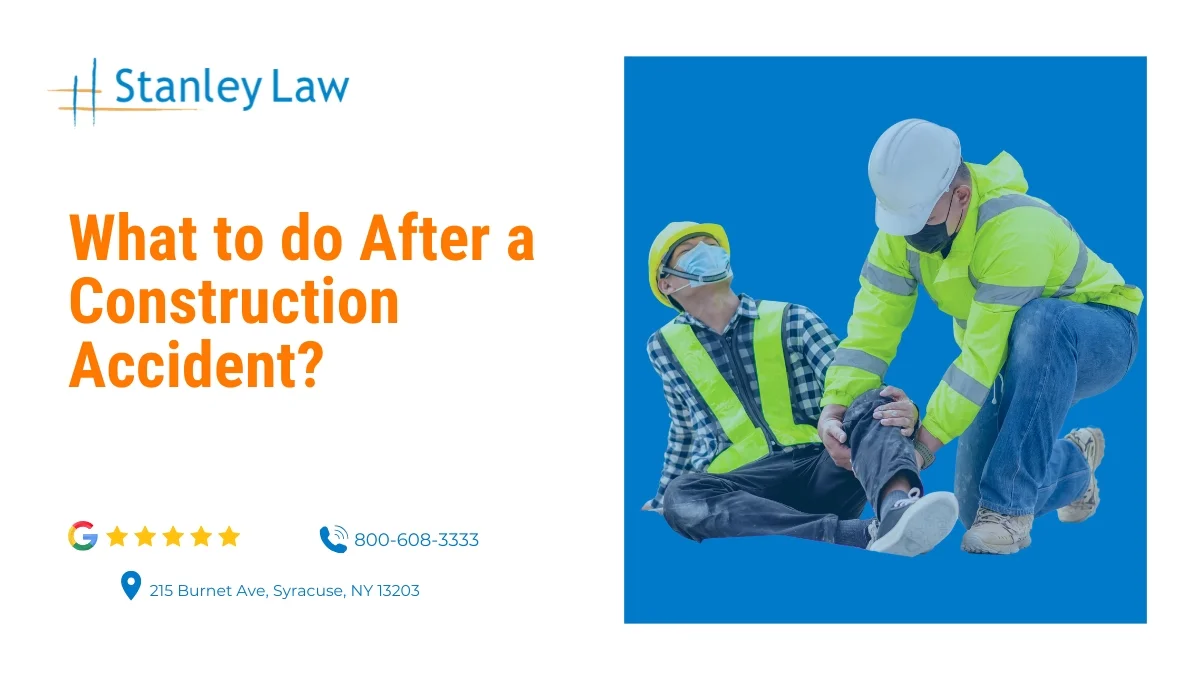Unfortunately, construction accidents are frequent and can lead to serious consequences for workers and their families. Knowing what to do after a construction accident is vital for ensuring safety and protecting your legal rights. In the chaos that follows an incident, it’s easy to be spellbound and uncertain about what to do next. This article will walk you through the immediate actions to take, like administering first aid, reporting the incident, and documenting evidence.
We’ll also share essential safety tips to help prevent future accidents on construction sites. By the end of this guide, you’ll be mentally strong enough to handle the aftermath effectively, prioritizing your health and rights.
Immediate Steps to Take Following a Construction Accident
Immediately after a construction accident, taking action is vital for safety and legal protection. Prompt action is key for safety and legal protection after a construction accident. Knowing the right steps allows you to respond effectively, minimize risks, and ensure injured workers receive timely care. Here are the key steps to secure the accident scene and provide first aid.
Secure the Accident Scene
Securing the accident scene is vital to prevent further injuries and protect the site. Here are the key actions to take:
- Assess Safety: Ensure the area is safe and move workers away from potential danger.
- Notify Others: Alert nearby personnel about the hazard to prevent additional accidents.
- Mark the Area: Mark the accident scene for first responders and investigators.
- Follow Safety Protocols: Adhere to construction safety protocols to help prevent workplace hazards.
Provide First Aid
Promptly providing first aid can greatly affect the injured person’s recovery. Follow these essential steps:
- Evaluate and Care: Assess the injured person’s condition and administer appropriate first aid.
- Call for Help: Contact emergency medical services immediately for severe injuries.
- Promote Training: Encourage all workers to be knowledgeable about emergency response procedures on construction sites.
Reporting and Documenting the Accident
Reporting and documenting a construction accident is vital for ensuring safety and protecting your rights. Prompt reporting helps establish the facts and supports compensation claims. Here’s how to effectively inform your supervisor and collect evidence.
Inform Your Supervisor
Reporting the accident to your supervisor promptly is crucial for a proper response. Here’s what to include:
- Incident Details: Clearly describe what happened, including the time, location, and involved parties.
- Injuries and Hazards: Report any injuries sustained and identify potential hazards at the scene.
- Follow Reporting Guidelines: Adhere to accident notification protocols to ensure thorough documentation.
- Support Future Claims: Accurate reporting is essential for documenting workplace accidents and supporting potential claims.
Collecting Evidence
Effectively recording accident details is vital for understanding the incident and protecting your legal rights after a construction accident. Here’s how to gather essential evidence:
- Photograph the Scene: Capture clear images of the accident site, any equipment involved, and visible injuries.
- Witness Accounts: Collect statements from witnesses to provide a clear narrative of events.
- Use Documentation Tools: Utilize checklists or forms to ensure thorough accident scene documentation.
- Timely Evidence Collection: Promptly gathering evidence strengthens your case for future claims.
Medical Care and Documentation
The next step is to seek medical attention after reporting the accident. Evaluate even minor injuries promptly to identify hidden issues and strengthen your compensation claim.
Seek Proper Medical Care
Getting a professional medical evaluation is vital, even for seemingly minor injuries. Here’s why it matters:
- Comprehensive Assessment: A medical evaluation helps identify all injuries, reducing the risk of complications.
- Documentation for Claims: Medical professionals provide essential construction injury reporting procedures records.
- Injury Treatment: Timely treatment leads to faster recovery and minimizes long-term impacts for construction workers.
- Legal Protection: Proper medical documentation supports your case if you need to file a claim later.
Managing Medical Reports
Organizing your medical documents is important for successfully dealing with compensation claims. Here are some tips:
- Keep Detailed Records: Maintain all medical records for compensation, including notes and treatment plans.
- Organize by Date: Sort documents chronologically to clarify the injury documentation process.
- Collect Additional Evidence: Include related medical bills and prescriptions to strengthen your claim.
- Review with a Professional: Consult a New York construction accident lawyer to ensure your documentation is complete and effective.

Understanding Workers’ Compensation Rights and Legal Rights
After seeking medical care and keeping detailed records, the next step is understanding your rights under workers’ compensation laws. This knowledge will ensure you receive the benefits and protection you’re entitled to. While workers’ compensation offers immediate relief, it may not cover all aspects of long-term recovery. As you move forward, you must consider potential financial and legal challenges.
Overview of Workers’ Compensation Claims
Here’s a simplified guide to understanding workers’ compensation benefits and effectively filing a claim:
- Know Your Benefits: Workers’ compensation typically covers medical expenses, lost wages, and rehabilitation costs.
- File a Claim: To initiate the contractor workers’ compensation process, report the injury to your employer and complete the necessary paperwork.
- Submit Promptly: File your claim as soon as possible to avoid delays in receiving your benefits.
- Track Your Progress: Keep records of all communications and documentation related to your claim for a smoother process.
Legal Considerations: When to Consult an Attorney
Knowing when to seek legal assistance can significantly impact your case. Here’s what to consider:
- Assess Complexity: Consult a workplace injury lawyer if your claim is denied or contested.
- Understand Your Rights: Legal advice can clarify your rights and options regarding construction accidents.
- Choose the Right Lawyer: Select an attorney specializing in workers’ compensation and construction injury cases.
- Consult Early: Seeking a lawyer’s advice early on helps you address any issues with your claim.
If you’re dealing with a construction site injury in New York, it’s essential to consult with a skilled NY construction accident lawyer who understands the complexities of these cases. Stanley Law Offices has multiple locations across New York, offering expert legal guidance for construction accident claims. Our team of experienced attorneys can assist with your workers’ compensation claim and any additional legal action necessary.
We serve victims in the following areas:
- Syracuse construction accident lawyer
- Rochester construction accident lawyer
- Binghamton construction accident lawyer
- Watertown construction accident lawyer
- Oneonta construction accident lawyer
Contact us today for personalized advice and dedicated support throughout the legal process.
Beyond the Accident: Legal and Financial Recovery
After filing a workers’ compensation claim, consider the long-term implications of your accident. Protecting your financial stability and managing any ongoing legal challenges is crucial.
Following Up on Your Compensation Claim
Tracking your claim is essential to ensure you receive the benefits owed to you. Here’s how to stay on top of your compensation claim:
- Monitor Your Claim Status: Regularly check the progress of your claim to ensure timely processing.
- Document Communications: Keep records of all interactions with your employer and the insurance company for reference.
- Address Obstacles Promptly: Contact your employer or a workplace injury lawyer immediately if you encounter issues or delays.
- Know Follow-Up Steps: Familiarize yourself with the workers’ compensation follow-up procedures to manage your claim effectively.
Considerations for Returning to Work
Returning to work safely is a significant step in your recovery. Here’s what you need to know about your rights and the process
- Understand Your Rights: Familiarize yourself with your rights as a construction worker regarding safe working conditions after an injury.
- Discuss Accommodations: Talk to your employer about any necessary adjustments in the workplace to support your safe return.
- Plan Your Transition: Prepare for a gradual return to work, ensuring you feel comfortable and capable while adhering to all safety guidelines.
Preventing Future Accidents
Preventing future accidents is vital for maintaining a safe construction site. Understanding risk factors and advocating for safer practices can significantly reduce the likelihood of incidents.
Identifying and Mitigating Risks
Recognizing common hazards and implementing safety practices are crucial for accident prevention. Here’s how to approach this:
- Conduct Inspections: Regularly assess the site for potential hazards and address any risks identified.
- Provide Training and PPE: Train workers to recognize hazards and ensure they have appropriate personal protective equipment (PPE).
- Establish Safety Protocols: Create guidelines that promote workplace risk mitigation and enhance construction accident prevention.
Advocating for Safer Work Environments
Encouraging effective safety protocols on-site helps build a safety culture. Here are the steps to take:
- Promote Safety Standards: Advocate for compliance with construction safety standards to uphold best practices.
- Engage Workers: Involve employees in safety discussions and encourage them to express their concerns.
- Implement and Review Initiatives: Launch workplace safety initiatives and regularly update protocols based on feedback and incident reports.
Conclusion
After a construction accident, securing the scene, providing first aid, and seeking professional medical care while carefully documenting the incident and all related communications is vital. Familiarizing yourself with your rights within the workers’ compensation claim process is important; consider consulting a workplace injury lawyer if you face any challenges. Additionally, advocating for safety on-site can help prevent future accidents, creating a healthier work environment. By taking these informed steps, you improve your chances of recovery and securing the compensation you deserve. Remember, professional support is available to guide you through this process.
If you need support, contact us today for a free consultation. Your safety and future are our top priority—let’s protect your rights together!

FAQs: What to Do After a Construction Accident?
What Is the Biggest Killer on Construction Sites?
Falls are the leading cause of death on construction sites, accounting for many accidents. Properly using safety equipment like guardrails and harnesses can help reduce this risk.
Who Takes the Biggest Blame for an Accident on a Construction Site?
Depending on the situation, multiple parties, including employers, supervisors, and workers, are often responsible for an accident on a construction site.
How Long Do I Have to Report a Construction Accident to Maintain Eligibility for Compensation?
You must report the accident within 30 days to remain eligible for workers’ compensation benefits.
How Can I Document a Construction Accident if I’m Injured and Alone on the Site?
You can document a construction accident using your phone if you’re injured and alone. Take photos of the scene and any hazards and record details as soon as possible.
What Are My Rights if I’m a Contractor and Not a Full-Time Employee?
Your rights as a contractor include a safe work environment, and depending on your contract and local laws, you may be eligible for workers’ compensation.

